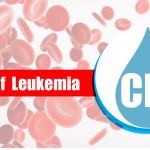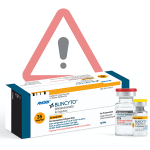Background: Pegaspargase (Oncaspar) is a conjugate of monomethoxy polyethylene glycol and L-asparagine amidohydrolase, an asparagine specific enzyme. The L-asparaginase is a kind of an enzyme that catalyzes the conversion of the amino acid L-asparagine into ammonia and aspartic acid. The pharmacological outcome of agent pegaspargase is thought to be based on selective killing of leukemic cells because of plasma L-asparagine depletion. Leukemic cells with low scaled expression of asparagine synthetase have a decreased potential to synthesize the L-asparagine and hence depend on an exogenous source of L-asparagine for survival.
On July 24’th 2006, the U.S. FDA granted approval to pegaspargase injection as a first-line therapy of patients with acute lymphoblastic leukemia (ALL) and as a component of a multiagent chemotherapy regimen. This medication was previously approved in the month of February, 1994 to treat patients with acute lymphoblastic leukemia who were hypersensitive to native forms of L-asparaginase.
Indication
First Line Acute Lymphoblastic Leukemia: Pegaspargase is prescribed as a component of a multi-agent chemotherapeutic regimen for the first line treatment of patients with ALL.
Acute Lymphoblastic Leukemia and Hypersensitivity to Asparaginase: Pegaspargase is prescribed as a component of a multi-agent chemotherapeutic regimen for the treatment of patients with Acute Lymphoblastic Leukemia and hypersensitivity to native forms of L-asparaginase.
Dosage & Administration
The recommended dose of Pegaspargase: a Chemotherapy for Acute Lymphocytic Leukemia (ALL) is 2,500 International Units/m2 which should be administered intramuscularly or intravenously. This medicine should be administered no more frequently than every 2 weeks.
When Pegaspargase is given intramuscularly, the volume at a single injection site need to be limited to 2 mL. In case the volume to be given is higher than 2 mL, multiple injection sites needs to be used. This medicine does not contain a preservative. Use only single dose per vial; and discard unused product.
When given intravenously, Pegaspargase (oncaspar injection) should be used over a period of 60 to 120 minutes in 100 mL of sodium chloride or dextrose injection 5%, through an infusion that is already running. After the Pegaspargase solution is diluted for intravenous use, the solution need to be used promptly. If immediate use is impossible, the diluted solution of Pegaspargase needs to be stored at 2°C to 8°C (36 °F to 46°F). Storage after dilution must not exceed 48 hours from the time of preparation to finish the administration. Infusion bags should be protected from direct sunlight.
Which are some other Chemotherapy drugs used to treat ALL?
Chemotherapy for ALL uses a combination of different types of anti-cancer medications. The most commonly prescribed chemo medicines include:
- Doxorubicin (Adriamycin)
- Cytarabine (cytosine arabinoside, ara-C)
- 6-mercaptopurine (6-MP)
- Methotrexate
- Cyclophosphamide
- Dexamethasone
- Prednisone
- Nelarabine (Arranon)
- Vincristine or liposomal vincristine (Marqibo)
Individuals typically get various of these medications at different phases during the time-span of treatment, but these all medicines are not for use at a time.
Possible side effects: Chemo drugs can be responsible for affecting certain normal cells, which may lead to ceratin side effects. The chemotherapy side effects depend on the nature and dose of medicines given and the total time-span they are taken. The commonly reported chemo side effects can include:
- Hair loss
- Mouth sores
- Loss of appetite
- Nausea
- Vomiting
- Diarrhea or constipation






